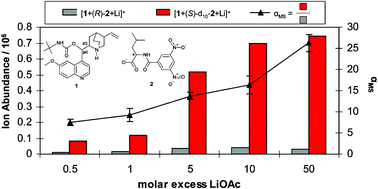Chiral recognition mass spectrometry: remarkable effects observed from the relative ion abundances of ternary diastereomeric complexes using electrospray ionization†
Abstract
The relative abundances of ternary diastereomeric complexes (composed each from a cinchonane-type chiral selector, a model chiral acid, and an alkali cation) are shown to change remarkably and fortuitously with variation in concentration and type of alkali metal using electrospray ionization-mass spectrometry and competitive binding analysis.


 Please wait while we load your content...
Please wait while we load your content...